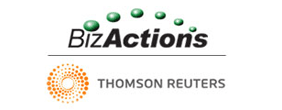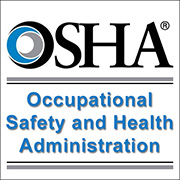Current Job Postings
Payroll: Outsource and Reassess
Payroll: Outsource and Reassess

When it comes to opening your own business, it can be easy to burst through the door running at full speed. Opening your own business is a major accomplishment in anyone’s life. It is a time in your life that you are not answering to anyone but yourself. You are your own boss, you are getting the profit of your labors, and you get the fancy desk with a picture of your wife or swimming pool on it. This is your time to shine and you are on top of it. At least you were three or five months ago. Now that the opening excitement is out of your system and you are squarely rooted in reality, there is a bit more to the job than you expected. To the point that some of it may be on the edge of organized and haywire.
There is a lot to figure out when it comes to running a business. There is the financial aspects of it. It’s not just taking in the profit and spending it as you see fit. You have to save, move, give, and take. You have to put so much into your payroll to pay your employees, and some back in case of any accidents. You are in a paper boat and it is feels like it is sinking a little too fast, so what do you do?
Outsource: Payroll involves a lot of numbers and monitoring. If you do not know how to do payroll, you can outsource it to someone who does. This works for two different reasons.
It puts your payroll into the hands of someone who can handle it efficiently
Instead of failing to keep up your own payroll, you are taking advantage of a powerful tool to put it back on track and keep it there.
Sometimes it is believed that the owner of a company or business should be in complete control over it. They are placed on a higher level of expectancy than your average worker or manager. The truth though is any good leader does not need to work harder for his company, when he can simply work more effectively. By making use of advantages like an outsourced payroll company, a business owner can do more with less stress.
Outsourcing payroll, and sharing responsibilities among others strengthens the inner workings of a company, creating a more team oriented atmosphere. Workplace morale is important to production. When there is a team mentality, it can make the entire work experience more enjoyable. People typically work easier and more productively when they are around familiar people as compared to working with people who are practically strangers to them. This can happen with employees even after working for the same company for years.
By assessing your company’s financial structure, and taking steps such as outsourcing payroll, you have effectively placed your payroll back on track. You have also created opportunities to raise employee morale. Payroll, being a major part of a company’s financial structure, sets a perfect ground level to work from once it is situated. From there you can monitor it through reports to factor it into the rest of your company’s revenue and expenses
There are other ways that an outsourced company can help your business grow. Vision H.R. for example also has options to handle your human resource department, train managers, and can help with recruiting. With a free quote option available, you have nothing to lose by inquiring about their services, and everything to gain. Get your company heading in the right direction by consulting with Vision H.R. today.
Edgewater Payroll
Vision HR | The Human Resource Experts
Paid Holidays: Non-Vacation
Paid Holidays: Non-Vacation

Everyone wakes up at least once in their life and wonders if there is an excuse good enough to call out of work. Luckily there are a few days in the year that we can stay in bed instead of getting ready for work. These are the major and some minor holidays that we celebrate. For most they mean a promised day off, and you don’t even need to make up an excuse for them. The ones that almost every business closes it’s doors for include Easter, Thanksgiving, and Christmas. Others will close for days such as Labor Day, or for religious holidays based off their companies religious believes. Of course these holidays are a cherished time to spend time with friends and family, but they are also cherished for being a break from the workplace.
Are these holidays subject to pay though?
Legally, the law does not dictate that a federal holiday off of work must be paid for. Rather a company will pay an employee for time not worked because of a holiday is purely up to the employer. The only exception to this is for salaried workers. A salary worker is paid a predetermined amount regardless of time worked, and can not be reduced because of a holiday. Many companies will typically offer some form of holiday pay as part of a benefits package. For anyone who works a wage or commission, they have to hope their employers are really in the holiday mood.
Alternatively, the rules for working on a major holiday are much the same. Many employers will pay time and a half for working during a major holiday such as Christmas, meaning if you get paid 10 dollars an hour, you will get paid 15 an hour on a Holiday. A few will even go as far to pay double for actively working. This is not required by law though, and some may find they are spending Christmas stocking shelves for regular wage. This time Salary is not exempted from the rules. Working during a major holiday does not require any extra pay for them.
When an employee is hired, typically the talk of benefits arrises. If you plan on giving them paid holidays, this is the time it would typically be discussed. Just be warned, if you offer holiday pay at the beginning, and do not deliver on the promise, it could at the very least cause tension in the workplace. If it is physically stated anywhere in the work place, than it may lead to possible legal issues. If you plan on ending any sort of holiday pay previously promised, make sure to announce it to all affected by it. If possible, explain to them the reason behind it. This will give them time to plan accordingly, while also helping them understand the situation. Naturally they will be a little sour at the lost income. Explaining the situation will help make the workplace morale from dropping.
If you are not sure on how to implement holiday pay into your payroll, yet want to give something back to your employees, consider outsourcing your payroll to an company such as Vision H.R. They have trained staff that can keep your regular payroll current and effective, who can handle items such as paid holidays and vacations. To get a free quote on your payroll options, visit the Vision H.R. website today.
Employee Benefits Melbourne
Vision HR | The Human Resource Experts
Payroll: Final Paychecks for Deceased Employees
Payroll: Final Paychecks for Deceased Employees

One thing that all parts of a company has in common is that the people who run them are only human. This means that they are acceptable to a range of events and accidents. Sadly, sometimes these can mean the passing of an active employee. While it is a difficult time for the co-workers, both in terms of extra workload and the emotional toll of losing a fellow worker, it is also complicated for management and payroll, who must deal with the last pay of the deceased employee.
There are certain steps that have to be taken to make sure the employee’s last check goes to the right person, along with any added benefits. A few things that you should remember when dealing with a deceased employee are.
Check State Laws: before diving into the proceedings, educate yourself a little on your state laws. Each state has their own wage and payroll laws. Make sure you are current on your own.
Final Paycheck: If you have given the last paycheck and the employee has not cashed it, it is a good idea to cancel the check. Print a new check made out to the employee’s estate or beneficiary.
Taxes: If the last check is issued during the same year as the employee’s death, you must withhold Social Security and Medicare. If the payment is made after the year of death, do not put it on the W-2 form and do not withhold social Social Security or Medicare.
Vacation and Sick Pay: If the employee has accumulated any paid vacation or sick days, check the state law to see if they are eligible to be paid to the estate or beneficiary. If the state law does not comment on paid vacation or sick days, consult the company’s policy on the matter.
Form for Estate/Beneficiary: The IRS requires that the payment made to the estate or beneficiary be put in Box 3 of Form 1099-MISC.This applies regardless of given during the year of death or after.
The best way to know how to handle this difficult time is to have your payroll in the knowledgeable hands of an outsourced payroll company such as Vision H.R. They specialize in all aspects of payroll, and can help guide you in the right steps to take.
Payroll New Smyrna Beach
Vision HR | The Human Resource Experts
It’s Not Too Soon to Tackle the Next ACA Compliance Task
It’s Not Too Soon to Tackle the Next ACA Compliance Task
As the IRS puts it, “every person that provides minimum essential coverage to an individual during a calendar year must file an information return and a transmittal.” Health plan providers and self-insured employers are “persons,” in the eyes of the IRS.
The main forms require month-by-month information that, among other things, establish whether you indeed are large enough to be subject to the pay-or-play requirements. Recall that even if you have fewer than the minimum number of full-time employees (that is, at least 50 next year), the inclusion of part-timers in the full-time equivalent (FTE) calculation may push you over the top.
Also, if your organization is part of a group of companies controlled by the same owners, the FTEs of the other companies in the “controlled group” need to be added to the calculation.
Basic Tasks
In a nutshell, as the IRS describes it, completing the forms requires that you:
- determine if your organization is an “applicable large employer,” that is, subject to pay-or-play,
- determine the kind of health insurance coverage you offered to full-time employees and their dependents, if any, and
- identify who your full-time employees are for each month and track health coverage information in 2015.
Earlier this month the IRS issued the final version of these forms and their corresponding instructions. In doing so, it took care of a few loose ends from the originally proposed versions.
Note: Internal Revenue Code sections 6055 and 6066 are the provisions added by the Affordable Care Act that cover reporting requirements.
According to the IRS, most filers will use Forms 1094-B (Transmittal of Health Coverage Information Returns) and 1095-B, also called the Health Coverage return form. Form 1094-B is brief and features basic employer information and states the number of copies of 1095-B that accompany the transmittal.
Who Gets the Forms
A 1095-B is filled out by the health plan and by self-insured employers not subject to the employer responsibility provisions of ACA for each covered employee. A copy of the 1095-B is sent to the IRS and to each employee. The form identifies any employee dependents covered under the plan, in addition to the employee. This document establishes to the IRS that the individual has “minimum essential coverage,” and therefore is not subject to the individual mandate.
Self-insured employers subject to the employer mandate (applicable large employers) need to use 1095-C, the Employer-Provided Health Insurance Offer and Coverage form.
While the forms themselves appear simple, the fine print describing how you determine the data to fill them out may introduce layers of complexity. (See sidebar for an accompanying list of required data elements.)
In the final instructions, the IRS stated that if a full-time employee of a self-insured employer accepts a qualifying offer of coverage and enrolls, you must provide that employee a 1095-C.
Leeway on “Offer”
Also, the final instructions made a change pertaining to plans that exclude spouses who are covered or offered health coverage through their own employers. The final definition of “offer of health coverage” provides some flexibility for interpretation when it comes to offers of coverage to employee spouses. The final rule lets you make the offer subject to certain tests. An example might be a spouse who was not already covered under another plan. You should consult an ERISA attorney before taking advantage of this provision.
In yet another nuanced change regarding your offer of coverage, the final instructions specify that you can use the first day of the first payroll period of each month, or the last day of the first payroll period of each month, if the last day is in the same month as when the payroll period starts. In addition, you can only report offering coverage during an unspecified period within a given month if the offer is made every day of that month.
For more interesting articles, feel free to subscribe to the Vision H.R. Newsletter!
Engaging Employees
Engaging Employees

When you own a business, you want everything to run smoothly for you. This keeps things productive and light for you and everyone working under you. Like any machine, sooner or later a cog is going to get stuck or a wire come unplugged. Also like any machine, these problems can most times be avoided with proper maintenance and inspection. Keeping tabs on your employees and being involved with them while at work can help keep your company running as a well-oiled machine. This comes in three main parts, which for simplicity will be referred to as Give, Take, and Push.
Give: When it comes to giving, it means making sure employees know about what is happening in the company, where the company is planning on going, what this means for the employee, and other items such as benefits, upcoming events, etc. If there is a company picnic or softball game coming up, don’t just place a memo on a bulletin board. Engage with your employees; ask if they are coming in a playful way. If someone has put in extra hours or has a noticeable increase in quality of work, compliment them. If they are due for a raise soon make a small comment on it.
Take: On the other end, when an issue is occurring in the workplace, the employees will typically notice it before the management. They are the ones working on the equipment, spending their time on the floor, and spend time around each other. Communicating with them is the best way to find out about these issues. Sometimes an employee is experiencing personal issues outside of work. Although it is typically not recommended to get too personal with employees, being understanding is actually a positive trait. If an employee is noticeably distressed at their station, let them take a break. Lessen their workload a little if possible or let them head home a little early that day. If someone feels they are being underappreciated it is best to find out before they consider ending their employment and going elsewhere.
Push: While being kind to your employees and engaging with them, don’t forget to push them a little as well. Not too hard of course, but with a little proper challenging you can motivate and indirectly compliment an employee. Challenging them shows you believe they are responsible or capable enough for a new challenge. It is also a good way to see how capable an employee truly is. If you push an employee to work a little harder and they succeed at the tasks, then maybe it is time to move them up the ladder. Give them a new position, a new pay scale, and let them prove themselves for real this time. If an employee does not rise to a challenge or has difficulty with it, then you know they are best being left in their current position.
These steps don’t mean you have to spend hours away from your desk. Owning a company comes with plenty of meetings and paperwork. You can spend less than an hour a day engaging employees outside of your normal routines. If you are looking to free up some more time to interact with employees, you could look at outsourcing some responsibilities such as payroll and human resources. A company like Vision H.R. can take the stress from payroll and give you the information you need to make financial decisions about your employees and their paychecks. If you are looking to outsource and own a business in the Lake Mary area, contact the Human Resource experts today and get a free quote.
Employee Benefit Packages
Vision HR | The Human Resource Experts
Payroll Communication
Payroll Communication
“Nothing in this world is free”. It is a line that has been used in some form for years. It has been in some of the greatest lectures that bosses have given their employees, governments to their people, parents to their rebellious teenagers, and even made an alternative rock band famous. The reason it has been used so many times is because it is the very foundation of the modern economic structure. Why work for a living when you can get it for nothing? It is this very concept that keeps the economy running. When you have employees working under you, it is important they know just what they are getting for the work they are doing. Rather, they know what they can get.

Of course they will know the very basic reward is the paycheck at the end of the week. This will keep most employees coming in every work day, but it doesn’t mean they are being truly productive. Without knowing what opportunities are open to them they may not work any harder than necessary. This is when “nothing in this world is free” enters the picture. Do you want to have employees with little to no motivation doing the bare minimum for the bare minimum price, or do you want to pay a little extra for employees giving the job their full attention? Being willing to give raises and benefits to your employees are the first steps in making your company more productive. It will also make for a less stressful workplace with a higher moral. Both of these things combined may cost a little more, but in the long run the increased production and profit can more than make up for it.
The first step to achieving this is to analyze your payroll and build employee benefit packages. There are several options that a company has when it comes to this. They can range from medical based benefits to retirement plans. When an employee has any form of benefits like these, they can be a little bit more stress free. The less on their mind the more they can focus on the work at hand. The aspect of regular raises is another important motivator for success. Remember this can change over time as well. The benefits may begin small, but as your business continues to grow, so can they.
The second step is making sure these benefits are communicated to your employees clearly. There is no point in having cake in the fridge if no one knows it is there. It is just wasted potential that will end up in the garbage. The same comes with the possibilities an employee has when it comes to payroll. Some employees go to work without knowing what benefits they are applicable for, or how they may apply for them. This means that a chance to have an employee working at their full potential is being missed.
The third and last step is to make sure they are kept up properly. Payroll is only as effective as the people behind it. With all the paperwork that is required, more so if you have a company that offers benefits, it can be a stressful ordeal. That is not even considering the fact that you have to build these packages to begin with. Luckily there are companies that can turn this complicated process into a simple one. Contact a company like Vision H.R. that can handle your payroll, build and keep up benefit packages for your company.
Employee Benefit Packages
Vision HR | The Human Resource Experts
Sick Days in Payroll
Sick Days in Payroll

When it comes to any form of employment, one rule stands true regardless of what career you enter. Some people may notice your achievements, but everybody will notice your mistakes. This holds especially true for doctors and people working in the payroll department of a company. Even though payroll may not be brain surgery, it is something that a company relies heavily on. When employees don’t get their paychecks on time, they understandably get a little bit irritated. Somethings, though, just cannot be avoided sadly. The main reason behind this is because the people behind the payroll department are only human. While they may do their best to get the job done and keep payroll on track, they are still subject to sick days and other obstacles that may occur.
What about vacation? people working in the payroll department do not want to spend all 52 weeks of the year in the office. Eventually they want to get out of the office, sleep in late, binge watch a Netflix show, and just relax. They may even want to get out of the state of a few days for a change of scenery. It is hard to keep payroll flowing when the person in charge of it is in the middle of the fifth season of Criminal Minds with no intent of stopping. You may have someone else who can tend to payroll in their absence, but chances are they won’t be as efficient, and their normal duties will still have to be completed along with payroll. Even a mostly digital payroll still requires someone behind the helm to keep it moving forward.
Worse yet, there are other things that may keep someone in payroll from performing their duties. Surviving for one single week without someone in the payroll department is one thing, but if they get injured, who knows how long they may be out. What if they come down with a serious illness? The flu can keep someone sniffling and sneezing in bed for days and that is far from the worse bug that someone can catch. When someone in the payroll department gets a bad bug it can cause a serious strain on the other people working in the department. This is especially if that person comes into work and spreads it to their coworkers.
How Can You Avoid This?
Look at outsourcing your payroll to an outside company. For payroll services Port Orange can turn to Vision H.R. Vision H.R. is a company run by capable employees who can take charge of your payroll services. While the people at Vision H.R. are just as capable of catching the flu or binge watching Criminal Minds, they have an entire team of people ready to take care of your payroll. If one person handling your payroll is out of the office, another can watch and take care of your payroll because Vision H.R. doesn’t just have a payroll department, they are the payroll department.
Payroll Services Port Orange
Vision HR | The Human Resource Experts
Benefits: Why They Matter
Benefits: Why They Matter

When it comes to employee productivity, several factors can either enhance or hinder their work ethics. One such item that can greatly enhance their working ability is the idea of a greater reward. Every employee on payroll, either directly or indirectly, considers it a reward for their hard work.Anyone can see that an employee will work harder if the prospect of higher wages is present, but how can you help push that cognitive further? If you require a certain kind of worker with a certain kind of knowledge, then the hiring process is less you hiring and more two parties meeting on equal ground. How do you secure someone’s employment? One way is with a benefit package. Rather custom or standard, benefits can help attract an employee with the right skill set to your company.
What Kind of Benefits can you Offer?
The most popular benefits revolve around Medical. The basic medical benefits that cover your general health is one such benefit that can be given either free or for a small percentage of an employee’s income. Dental and Vision are also medical benefits that can be given to employees.
Life Insurance is something some companies use to enhance their benefit package. It protects employees and their family incase death occurs while under the life insurance coverage. The form of payment can differ depending on coverage and cause of death.
There is also the option for Supplement Products that give additional coverage that an employee can purchase on top of the offered medical benefits. Some forms of supplement products include:
- Accidental Death
- Cancer
- Dental
- Life
- Short Term Disability
Another popular benefit that can be offered, especially for those consciousness about their future, is 401K and other Retirement plans. These include the option for an employee to invest money into a retirement plan. This could be a sound investment with little risk, or one where the investment can potentially increase or decrease. There are different options that can be offered.
These are just a few of the benefits that you can extend to your employees. With so many possible options, benefit packages for employees that are both effective and affordable can get a little disorienting to try to compile on your own. Fortunately there are companies that can help. Look at an outsource payroll company like Vision H.R. that can analysis your company’s needs and put together a custom benefit package to offer employees with the best services and prices available for your needs.
Group Benefits Daytona Beach
Vision HR | The Human Resource Experts
When Does Sexual Harassment Occur?

When Does Sexual Harassment Occur?
One of the biggest obligations that managers and supervisors face is knowing what kinds of behaviors can involve illegal sexual harassment. And once they recognize the actions, they need to know what to do about it. Exactly, when does sexual harassment occur?
Steps to Take
Quick. Suppose a manager or supervisor makes a sexual advance on an employee. What is the employer’s responsibility?
The employer doesn’t have the luxury of hiring a special prosecutor who can investigate for years. In a sense, the employer is the special prosecutor — and the judge and jury as well. But if not careful, it could be the employer rather than your employee who winds up in court.
Here’s a scenario: A manager is speaking at a hotel convention. A woman who works for him is taking registrations at a desk in the lobby. She gets a message that the manager wants to see her in his hotel suite. She goes to his room where he asks her for a sexual favor. She refuses, and leaves in disgust. The next day, or the next month, or the next year, she calls a press conference and announces she is charging him, and the employer, with sexual harassment.
Now it is your job to sort out the facts. You’re the special prosecutor, remember?
Was this an example of woefully poor behavior — or was it sexual harassment?
Some points are clear. Sexual harassment is a form of discrimination. It’s the sex part of sex discrimination. It violates federal law in at least two areas: Educational settings and in the workplace. It is the “sleep with me or you’ll lose your job” exploitation. But the law takes it a little further than that.
In the workplace, sexual harassment has been defined as “unwelcome sexual conduct.” The definition prompted a spokesperson for the Women’s Legal Defense Fund, to lament: “That implies that people get one free pass. How else do you know it’s unwelcome?”
In the situation involving the manager and the employee, if he stopped his advances when he saw they were unwelcome, and didn’t repeat this type of behavior again, then there probably was no illegal sexual harassment. Illegal sexual harassment is sexual attention that is: * Unwelcome and unwanted. * Affecting the victim’s physical and emotional health and interfering with the ability to do a job. * Perceived by the victim to mean that submission is a condition of employment or advancement.
Another potential workplace example: Jane is a good employee who sits next to Ralph. One day, Ralph puts a calendar on his desk that has a nude pin-up photo in full view. The photo makes Jane uncomfortable and she tells Ralph first, and then she tells you that it is bothering her. A week later, she complains to you again.
There are two red flags here:
1. Her emotional health may be affected by the refusal to take down the calendar, as well as her comfort and probably her job performance.
2. There are no more “free passes.” She’s made it clear that the conduct is unwelcome.
Here are some tips on what to do if an employee reports an incident of sexual harassment:
Take all complaints seriously so your employee sees that you are sincere, unbiased and non-judgmental.
Talk with the employee but also make sure you get a written account of what happened and specifically, what constituted the harassment.
Respond quickly to the complaint. If you have a human resources manager, turn the information over to that person immediately. If you don’t have someone like that on staff, consult an attorney.
And the first step toward preventing sexual harassment complaints is to watch your own behavior.
Since a disgruntled employee might someday charge you with sexual harassment, you can make sure any such charge would be groundless.

Sexual Harassment at work often goes unreported, as people fear that they may lose their jobs or damage their careers if they ‘rock the boat’
Guidance on Sexual Harassment:
Here’s how: Never touch your employees without permission. Never be demeaning to people, particularly with reference to gender. Never treat employees as potential dates. Never get romantically involved with an employee. Never make sexually suggestive comments. Always make sure that compliments contain no innuendo. Always keep your office door open when meeting with someone of the opposite sex.
If you want to avoid a sexual harassment lawsuit, the best advice is to take all complaints seriously and investigate them promptly. Handle your investigation discreetly to avoid office gossip. Record interviews if possible or have a witness present. Interview both the complainant and the accused with compassion, because you must remain impartial until you know the truth.
Do exit interviews with any employee leaving for any reason. In the course of the interview, ask if the employee ever encountered sexual harassment. If the answer is “yes,” act on it immediately. If the answer is “no,” and you have it in writing, you have some protection against a complaint ever being lodged by that former employee.
To prevent sexual harassment complaints:
1. If you don’t have a policy prohibiting sexual and other illegal harassment, develop one and make sure it is included in your employee handbook. Define harassment, state that the employer won’t tolerate it and make sure employees understand it’s OK to blow the whistle on someone.
2. Make sure your employees know what they should do if they experience sexual or other illegal harassment.
3. Be observant in your workplace. If you take steps to stop inappropriate behavior, no matter how innocent it may seem, you may save yourself from far more serious problems.
4. Don’t forget the three most important parts of any investigation of alleged sexual harassment: Document, document, document.
Vision HR can help you create and enforce a Sexual Harassment policy and conduct training on the proper steps for employees, managers and owners to handle this very real threat to any business. Give Vision HR a call to discuss options on how to get this type of support from experts for your business at 386-255-7070.
Source Bizactions / Thompson Reuters 
Comply with New OSHA Reporting Rules
Is your Business ready to Comply with New OSHA Reporting Rules?
New rules from the Occupational Safety and Health Administration have expanded the agency’s reach for reporting requirements. Among other changes, more industries will now have to keep and post logs of employee illness and injuries. February 1,2015 is the posting deadline for those already covered before the new rules kicked in on January 1,2015. Will your company be affected? Is your Business ready to comply with New OSHA Reporting Rules? Here’s what you need to know.
Occupational Safety and Health Administration (OSHA) rules for reporting worker injuries apply primarily to employers considered to have hazardous work environments. However, in the tragic event of an on-the-job work-related fatality — 4,405 of which occurred in 2013 — all employers with at least three employees must report that occurrence to OSHA within eight hours. That has always been the case.

Here is the information employers in all industries need to give OSHA when reporting any of the four serious events:
1. The name of your business
2. The location of the work-related incident
3. When the incident occurred
4. The type of reportable event
5. The number and names of all employees involved
6. Your contact person and his or her phone number
7. And a brief description of the incident.
Covered or Not?
A list of newly covered industries can be found on the OSHA website here, and also a list of industries which are now exempt.
New regulations issued last September have just become effective, requiring that all employers must also report to OSHA within 24 hours when any of the following three work-related events occurs:
•Inpatient hospitalization of one or more employees,
•Amputations, and
•Loss of an eye.
You can communicate the information to OSHA by calling a regional OSHA office, or a 24-hour OSHA hotline (800-321-6742) or by filling out a form on the OSHA.gov website.
A work-related death might not be instantaneous, of course. If an employee’s work-related death occurs within 30 days of the incident, you still need to contact OSHA. And of course, the underlying cause of the accident must be recorded at the time it occurred.
Is it Really Work-Related?
Also, it is not always clear whether certain causes of death or in-patient hospitalization, such as a heart attack, are really linked to the job or not. According to OSHA, “If the heart attack is related to a work-related incident, you must report [it]” and the local OSHA official will decide whether to investigate the matter to decide whether there was a connection.
What happens if you don’t hear about the death, inpatient hospitalization or loss of a limb or eye right away? Are you still subject to the eight/24-hour reporting deadline? OSHA says in this situation, the clock starts ticking not from the time of the incident itself, but from the time you “or any of your agent(s)” learn about it and determine that it is work-related. Presumably in the case of a death, that wouldn’t take long.
The new rules also expanded by 25 the number of industry sectors now covered by ongoing reporting requirements applicable to employers with more than 10 employees. Those requirements include maintaining a log and posting the summary annually. The expansion is the result of OSHA switching to a new organization (the North American Industry Classification System) to classify employers as hazardous or not. Specifically, only employers having less than 11 employees, or those in industries deemed to be “low hazard” are exempt from the reporting rule.
Newly Covered Industries
Newly covered industries include bakeries, automobile dealers, building material and supplies dealers, “activities related to real estate,” facilities support services, individual and family services, among others. (See the sidebar bottom for a link to specific industries which are newly covered, as well as a link to industries which were previously covered by the reporting requirements, but now are exempt.)
The OSHA forms covered employers must use are:
•Form 300: The Log of Work-Related Injuries and Illnesses. This form requires just a superficial description of incidents, and is used to calculate numbers for Form 300A.
•Form 300A: Summary of Work-Related Injuries and Illnesses during the prior calendar year. This form lists the total number of deaths, days away from work, and cases in which an injured employee had to move to a new job or have duties restricted as a result of the incident. The form also requires enumeration of the categories of injury or illness. It must be posted prominently at each work location by February 1 through April 30 — even if you had no reportable events during the period covered by the report. Copies should be supplied to employees whose jobs are such that they would probably not be able to see the posted version.
•Form 301: Injury and Illness Incident Report. This form requires not only basic data about the employee, but descriptions of what the employee was doing at the time of the incident, the event itself and nature of the injury or illness, and a description of any object (for example, a tool) or substance involved.
To be reportable, work-related injuries and illnesses must result in death, loss of consciousness, days away from work, restricted work activity or job transfer or “medical treatment beyond first aid.” Instructions for the forms address the nuances.
Because the forms contain information about employee health, forms 300 and 301 must be “used in a manner that protects the confidentiality of employees,” according to OSHA.
If you need help to Comply with New OSHA Reporting Rules, reach out to Vision HR and explore working with that company to meet your OSHA reporting needs.
 Source Biz Actions / Thompson Reuters
Source Biz Actions / Thompson Reuters












